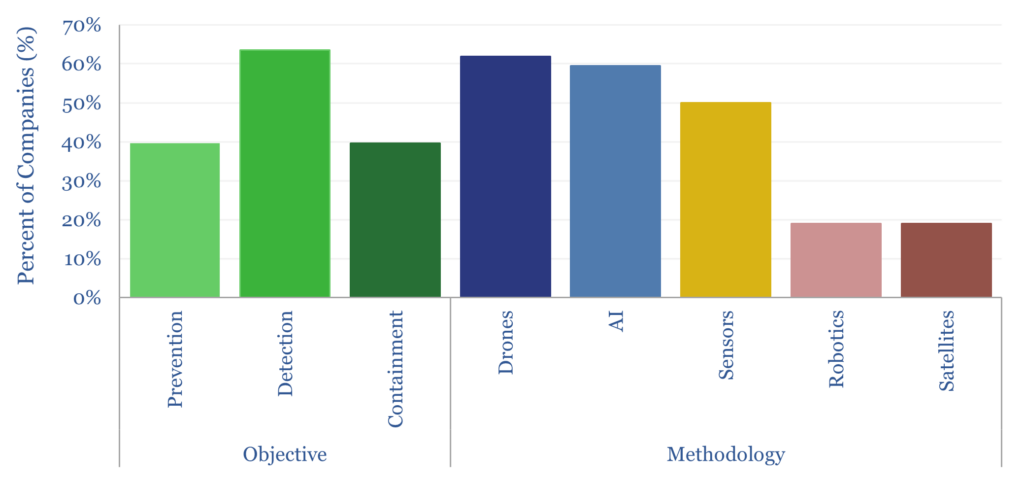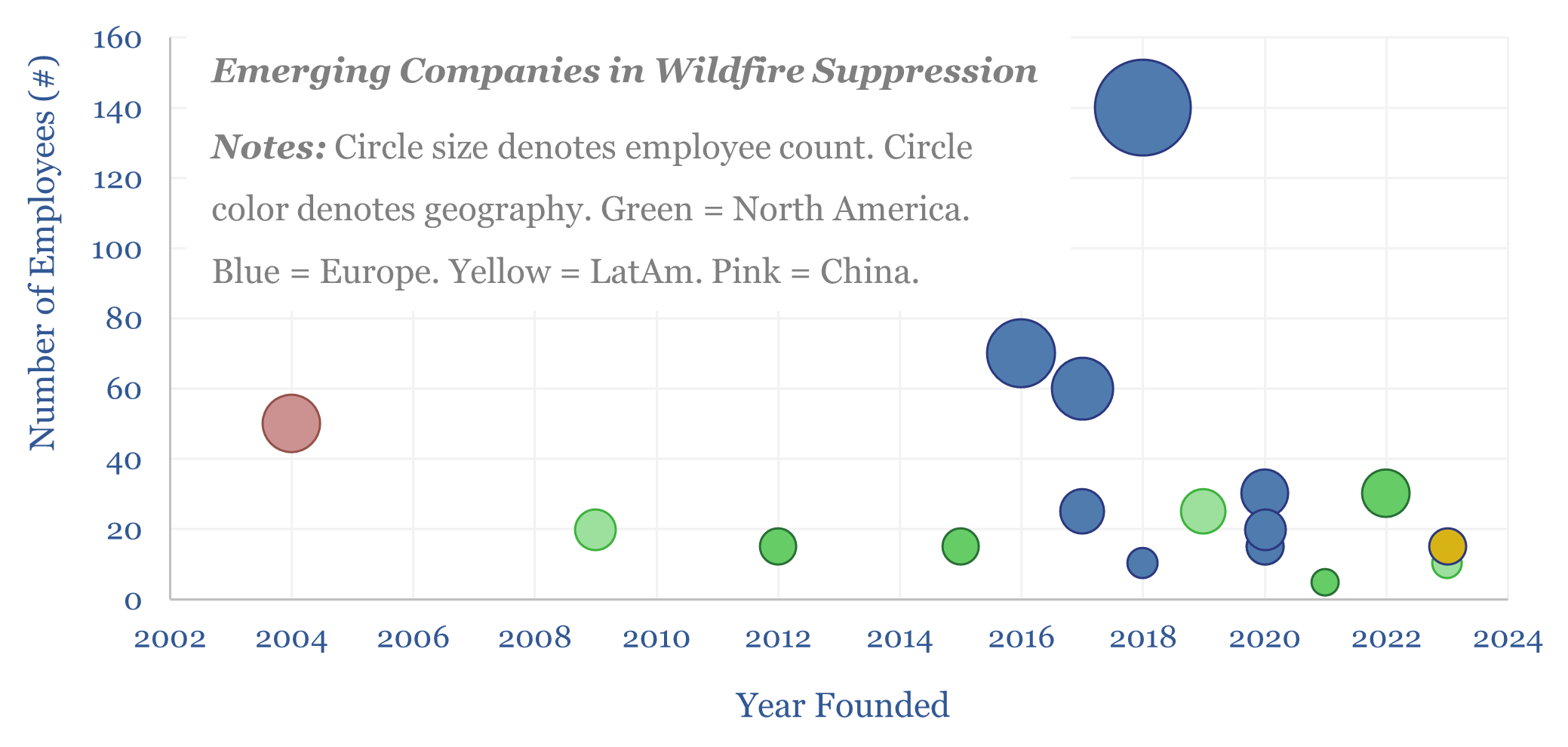1-2bn acres of land burns globally each year, which could increase by over 35% due to climate change. Hence this data-file screens emerging companies in wildfire suppression, which are focused on preventing, detecting and containing wildfires. The most commonly used methods are drones and AI. Thus adapting to climate change requires more energy not less?
1-2bn acres of the world’s 40bn total acres of land burns each year, across 1M fires per year, covering an average of 440 hectares per fire event, and lasting an average of 4-5 days. This emits 6-12 GTpa of CO2, although note these are not classed as manmade CO2 emissions, as wildfires are natural events.
NASA has estimated wildfires could increase 35% by 2100 due to seemingly unavoidable climate change, which would emit the equivalent of 4GTpa of incremental CO2. A Met Office study predicts a 30% increase in extreme fires by 2050, and a 50% increase by 2100.
There is also a direct human impact, as wildfires threaten homes and infrastructure. In 2023, the World Economic Forum said the average annual cost of wildfires was $50bn pa. From 2014-23, SwissRe estimates a global economic cost of wildfires at $106bn pa. Although other estimates have put the cost of California’s 2025 wildfires at $250bn.
Hence this data-file has screened 20 emerging companies aiming to suppress wildfires. 90% are private. 90% were established in the past decade. This is a growing area of interest, as many climate VCs are seemingly shifting their focus from climate change prevention to climate change adaptation.
65% of the companies are focused on rapid detection of wildfires, as it is materially easier to extinguish a fire if it is detected within the first 10-30 minutes, and if it can be put out before it has spread.
Another 40% of the companies focused on prevention (e.g., removing biomass) and another 40% focused on containment (e.g., snake-like robots, attached to hoses, which crawl through a forest and spray water to create fire-breaks). Detailed examples are in the data-file.

Amazingly, 60% of the companies in the data-file are using drones and AI. This is yet another reason to think that achieving the best human outcomes, in the face of climate change, requires more energy not less.
For example, Dryad Networks has developed a networked solution for high-value forests, attaching solar-powered sensors to trees, which detect fires quickly, so that autonomous drones can be dispatched. Case studies on its website show a network of 91 sensors, deployed across 78 hectares in Lebanon, detecting and localizing a fire within 30-minutes, based on sudden air quality changes. The sensors can also be used to detect moisture, O2, pesticide levels and illegal logging, in order to improve agricultural practices.
The State Grid Corporation of China has undertaken a similar project, at much larger scale, using 8 Doppler Radars, 13 remote sensing satellites, 2,826 drones and 30,000 sets of channel visualisation devices, to forecast fire risk, every six minutes, around transmission lines traversing 100,000 square kilometers of forests. 520,000 trees have been pruned and cut down as part of the program.
20 emerging companies in wildfire mitigation, their methods, and their progress to-date are discussed in the data-file.
